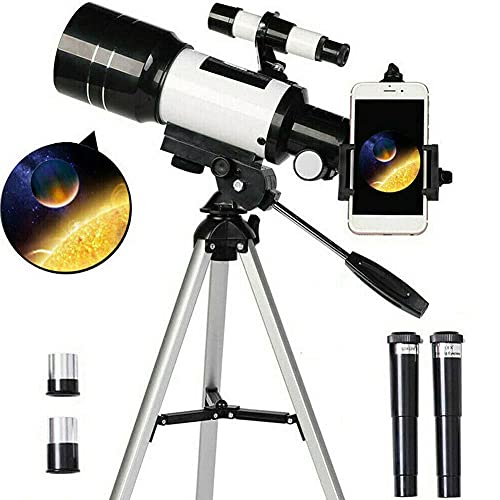Choosing the Best Location for Stargazing with a Telescope
Stargazing with a telescope is a rewarding hobby for many astronomy enthusiasts. To fully appreciate the beauty of the night sky, it is important to choose the right location for stargazing. Factors such as light pollution, weather conditions, and accessibility play a crucial role in determining the best location. In this article, we will explore the key considerations to keep in mind when selecting a stargazing spot, as well as some top recommended locations around the world.
Minimizing Light Pollution
Light pollution is one of the biggest challenges for stargazers. It refers to the excessive artificial light that obscures the visibility of stars and other celestial objects. To ensure the best stargazing experience, it is important to choose a location away from urban areas, major roads, and other sources of bright lights. National parks, remote countryside areas, and deserts are often good choices for minimizing light pollution.
Clear Skies and Weather Conditions
Clear skies are essential for stargazing, so it is important to consider the weather conditions of a potential stargazing location. Areas with low humidity, minimal cloud cover, and limited light pollution have the best chances of offering clear skies. Checking weather forecasts and historical data can give you an idea of which locations have the most favorable weather conditions for stargazing.
Accessibility and Safety
Accessibility and safety are important factors to consider when choosing a location for stargazing. Ideally, the spot should be easily accessible by road or foot, with minimal travel time and effort required. It should also be a safe area, free from any potential dangers or hazards. If you plan on stargazing overnight or for extended periods of time, make sure to research and follow any rules or regulations related to camping or staying overnight in the area.
Recommended Locations
There are several renowned locations around the world that are known for their excellent stargazing conditions. Here are some of the top recommendations:
a. Mauna Kea, Hawaii, USA
Mauna Kea in Hawaii is one of the most popular stargazing locations in the world. Its high altitude, clear skies, and minimal light pollution make it an ideal spot for both amateur and professional astronomers. The Mauna Kea Observatories, located near the summit, offer public stargazing programs and guided tours.
b. Atacama Desert, Chile
The Atacama Desert in Chile is famous for its clear skies and dry climate, making it an excellent location for stargazing. It is home to several world-class observatories and is considered one of the best places on Earth to observe the night sky. The region offers various stargazing tours and experiences, allowing visitors to witness the beauty of the Milky Way and distant galaxies.
c. NamibRand Nature Reserve, Namibia
The NamibRand Nature Reserve in Namibia is known for its stunning landscapes and pristine night skies. It is a designated Dark Sky Reserve, which means it has minimal artificial light pollution, making it an ideal spot for stargazing. The reserve offers guided stargazing tours, providing visitors with an unforgettable celestial experience.
d. Galloway Forest Park, Scotland, UK
Galloway Forest Park in Scotland is the first Dark Sky Park in the UK. Its remote location and limited light pollution make it a fantastic destination for stargazing. The park offers a range of visitor facilities, including a visitor center with astronomy exhibits and a planetarium, as well as designated stargazing spots.
e. Aoraki Mackenzie International Dark Sky Reserve, New Zealand
The Aoraki Mackenzie International Dark Sky Reserve in New Zealand is renowned for its stunning night skies. It is one of the darkest places on Earth, offering unparalleled views of the Milky Way and the Southern Hemisphere constellations. The reserve has several stargazing facilities, including observatories and guided tours.






